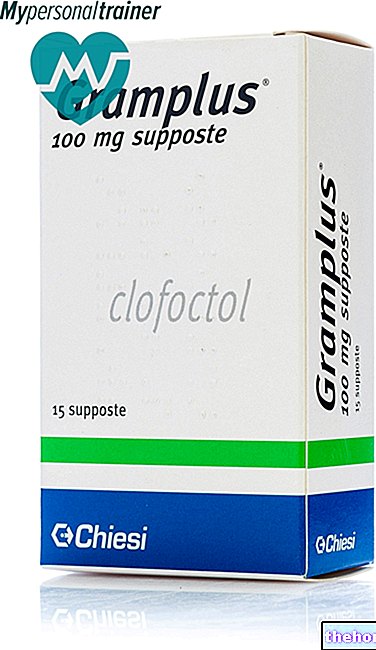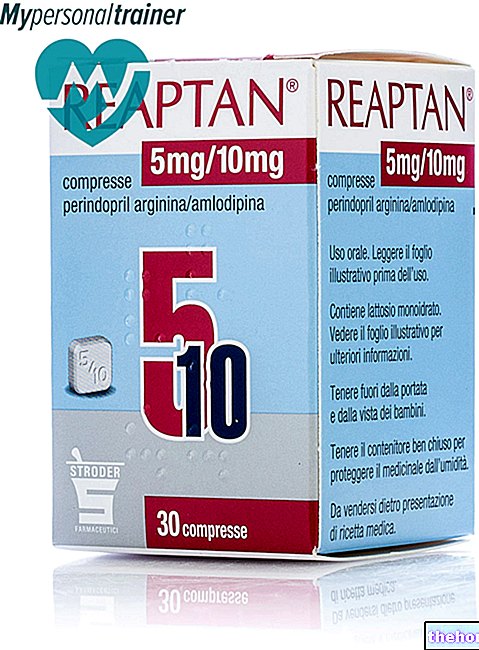Active ingredients: Alfuzosin (alfuzosin hydrochloride)
XATRAL 2.5 mg coated tablets
Xatral package inserts are available for pack sizes:- XATRAL 2.5 mg coated tablets
- XATRAL 5 mg prolonged-release coated tablets
- XATRAL 10 mg prolonged-release tablets
Why is Xatral used? What is it for?
PHARMACOTHERAPEUTIC CATEGORY
Selective antagonist on postsynaptic α1-adrenergic receptors located in the bladder trigone, urethra and prostate.
THERAPEUTIC INDICATIONS
Treatment of functional symptoms of benign prostatic hypertrophy.
Contraindications When Xatral should not be used
Hypersensitivity to the active substance or to any of the excipients.
History of orthostatic hypotension.
Association with other α1-antagonists.
Severe hepatic insufficiency.
Precautions for use What you need to know before taking Xatral
Alfuzosin should be administered with caution to patients on antihypertensive or nitrate therapy. Orthostatic hypotension may occur in some patients, with or without symptoms (dizziness, fatigue, sweating), in the first few hours after taking alfuzosin. In these cases, the patient must be placed in the supine position until the symptoms are completely resolved. These phenomena are generally transient, appear at the start of therapy and generally do not affect the continuation of treatment. A pronounced drop in blood pressure (circulatory collapse) has been reported in post-marketing surveillance in patients with pre-existing risk factors ( such as underlying heart disease and / or concomitant treatment with antihypertensive drugs, older age) (see section "Undesirable effects"). The risk of developing hypotension and related adverse reactions may be higher in elderly patients. Therefore, alfuzosin should be administered with caution in this patient group.
The patient should be informed of the possibility of these events occurring.
Care should be taken when administering alfuzosin to patients in whom other α1-antagonists have caused a pronounced hypotensive effect or in patients receiving antihypertensive or nitrate drugs. In patients with coronary artery disease, specific treatment for coronary insufficiency should be continued. If anginal episodes reappear or worsen, treatment with alfuzosin should be discontinued.
Like all α1-blockers, alfuzosin should be used with caution in people with acute heart failure. Patients with congenital prolongation of the QTc interval, with known history of acquired QTc prolongation or on drug therapy that are known to cause prolongation of the QTc interval should be evaluated before and during alfuzosin therapy. During cataract surgery some patients, previously treated or treated with α1-blockers, have developed the Floppy Iris Syndrome (IFIS - Intraoperative Floppy Iris Syndrome, a variant of the small pupil syndrome). risk of this event appears to be very low, the ophthalmologist surgeon must be aware of the current or previous treatment with α1-blockers before proceeding with the operation since the appearance of IFIS can increase surgical complications during the operation
It is recommended that you inform your eye doctor about your current or previous treatment with alfuzosin before undergoing cataract surgery (lens clouding). Alfuzosin could cause complications during the operation which can be treated if the specialist has been notified in time.
The tablets should be swallowed whole. Any other method of administration, such as crunching, crushing, chewing, grinding or powdering them should be prohibited. These actions can lead to improper release and absorption of the active ingredient and therefore the possible onset of adverse reactions.
Patients with pre-existing cerebrovascular disorders, symptomatic or symptomatic, there is a risk of cerebral ischemia, due to the hypotensive action that can develop following the administration of alfuzosin.
Interactions Which drugs or foods may change the effect of Xatral
Tell your doctor or pharmacist if you have recently taken or are taking any other medicines, even those without a prescription.
Contraindicated associations
Other α1-antagonists (see "Contraindications"), due to the risk of potentiation of the hypotensive effect.
Associations that require special attention
- Antihypertensive drugs (see "Precautions for use").
- Nitrates (see "Usage Precautions").
- Strong CYP3A4 inhibitors (such as ketoconazole, itraconazole and ritonavir) as they increase the concentration of alfuzosin in the blood.
Administration of general anesthetics in patients treated with alfuzosin may induce blood pressure instability.
Warnings It is important to know that:
Effects on ability to drive and use machines
Undesirable effects such as vertigo, dizziness and asthenia may occur especially at the beginning of treatment. This should be taken into account when driving vehicles or using machines.
Important information about some of the ingredients of Xatral
The medicine contains lactose, therefore patients with rare hereditary problems of galactose intolerance, lactase deficiency or glucose / galactose malabsorption should not take this medicine.
Dosage and method of use How to use Xatral: Dosage
Adults
The recommended posology is 1 XATRAL 2.5 mg tablet 3 times a day (7.5 mg / day). The first tablet should be taken just before bedtime.
Elderly and patients being treated with antihypertensives
As a rule, as a precaution when prescribing alfuzosin in elderly patients (over 65 years of age) and in patients treated with antihypertensives, the starting posology should be 1 tablet morning and evening.
These doses can be increased according to the clinical response, without however exceeding 4 tablets of 2.5 mg (10 mg) per day.
Kidney failure
In patients with renal insufficiency it is recommended, as a precaution, that the initial dosage is one tablet of XATRAL 2.5 mg twice a day and that it is then adapted according to the clinical response.
Hepatic insufficiency
It is recommended that, in patients with mild to moderate hepatic impairment, therapy is initiated with one tablet of XATRAL 2.5 mg per day, to be increased to 2 tablets per day, depending on the clinical response.
Pediatric population
The efficacy of alfuzosin has not been demonstrated in children aged 2-16 years. Therefore alfuzosin is not indicated for use in the pediatric population.
Overdose What to do if you have taken too much Xatral
In the event of an overdose, the patient should be hospitalized, kept in the supine position and given conventional treatment for hypotension.
In case of marked hypotension, an "adequate corrective therapy can be constituted by a vasoconstrictor that acts directly on the muscle fibers of the vessels.
Due to the high protein binding, alfuzosin is difficult to dialysis: dialysis does not therefore bring significant benefits.
In case of accidental ingestion / intake of an overdose of alfuzosin, notify your doctor immediately or go to the nearest hospital.
If you have any questions about the use of Xatral, ask your doctor or pharmacist.
Side Effects What are the side effects of Xatral
Like all medicines, Xatral can cause side effects, although not everybody gets them.
The following assessment of the expected frequencies was used to classify the undesirable effects: Very common (> 1/10), common (> 1/100 and 1/1000 and 1 / 10,000 and
Cardiac pathologies
Uncommon: tachycardia, palpitations.
Very rare: Anginal episodes in patients with pre-existing coronary artery disease.
Not known: atrial fibrillation.
Eye disorders
Uncommon: abnormal vision.
Not known: flag iris syndrome (IFIS).
General disorders and administration site conditions
Common: asthenia, malaise.
Uncommon: edema, chest pain.
Gastrointestinal disorders
Common: nausea, abdominal pain, diarrhea, dry mouth.
Not known: vomiting.
Hepatobiliary disorders
Not known: hepatocellular lesions, cholestatic liver disease.
Nervous system disorders
Common: fainting / dizziness, vertigo, headache.
Uncommon: somnolence, syncope.
Not known: Cerebral ischaemia in patients with underlying cerebrovascular disorders
Diseases of the reproductive system and breast
Not known: priapism.
Respiratory, thoracic and mediastinal disorders
Uncommon: rhinitis.
Skin and subcutaneous tissue disorders
Uncommon: rash, pruritus.
Very rare: urticaria, angioedema.
Vascular pathologies
Common: hypotension (orthostatic).
Uncommon: flushing.
Not known: circulatory collapse in patients with pre-existing risk factors (see section "Precautions for use").
Disorders of the blood and lymphatic system
Not known: neutropenia, thrombocytopenia
Compliance with the instructions contained in the package leaflet reduces the risk of undesirable effects.
Reporting of side effects
If you get any side effects, talk to your doctor or pharmacist. This includes any possible side effects not listed in this leaflet. Side effects can also be reported directly via the national reporting system at https://www.aifa.gov.it/content/segnalazioni-reazioni-avverse. By reporting side effects you can help provide more information on safety of this medicine.
Expiry and Retention
Expiry: See the expiry date printed on the package. The expiry date indicated refers to the product in intact packaging, correctly stored.
Warning: do not use the medicine after the expiry date indicated on the package.
Storage: Store at a temperature not exceeding 25 ° C.
Medicines should not be disposed of via wastewater or household waste. Ask your pharmacist how to dispose of medicines you no longer use. This will help protect the environment.
Keep this medicine out of the reach and sight of children.
Composition and pharmaceutical form
COMPOSITION
One tablet contains:
Active ingredient: alfuzosin hydrochloride 2.5 mg.
Excipients:
Core: lactose, microcrystalline cellulose, povidone, sodium carboxymethyl starch, magnesium stearate.
Coating: hypromellose, macrogol 400, titanium dioxide (E171).
PHARMACEUTICAL FORM AND CONTENT
Coated tablets. Box of 30 tablets.
Source Package Leaflet: AIFA (Italian Medicines Agency). Content published in January 2016. The information present may not be up-to-date.
To have access to the most up-to-date version, it is advisable to access the AIFA (Italian Medicines Agency) website. Disclaimer and useful information.
01.0 NAME OF THE MEDICINAL PRODUCT
XATRAL
02.0 QUALITATIVE AND QUANTITATIVE COMPOSITION
XATRAL 2.5 mg coated tablets
Each tablet contains:
Active principle: alfuzosin hydrochloride 2.5 mg.
XATRAL 5 mg prolonged-release coated tablets
Each tablet contains:
Active principle: alfuzosin hydrochloride 5 mg.
For the full list of excipients, see section 6.1.
03.0 PHARMACEUTICAL FORM
Coated tablets.
Prolonged-release coated tablets.
04.0 CLINICAL INFORMATION
04.1 Therapeutic indications
Treatment of functional symptoms of benign prostatic hypertrophy.
04.2 Posology and method of administration
XATRAL 2.5 mg coated tablets
Adults
The recommended posology is 1 tablet of XATRAL 2.5 mg coated tablets 3 times a day (7.5 mg / day).
The first tablet should be taken just before bedtime.
Elderly and patients being treated with antihypertensives
As a rule, as a precaution when prescribing alfuzosin in elderly patients (over 65 years of age) and in patients treated with antihypertensives, the starting posology should be 1 tablet morning and evening.
These doses can be increased according to the clinical response, without however exceeding 4 tablets of 2.5 mg (10 mg) per day.
Kidney failure
In patients with renal insufficiency it is recommended, as a precaution, that the initial dosage is 1 tablet of XATRAL 2.5 mg coated tablets twice a day and that it is then adapted according to the clinical response.
Hepatic insufficiency
It is recommended that, in patients with mild to moderate hepatic insufficiency, therapy is started with one tablet daily. XATRAL 2.5 mg coated tablets, to be increased to 2 tablets per day, depending on the clinical response.
XATRAL 5 mg prolonged-release coated tablets
Adults
The dosage of XATRAL 5 mg prolonged-release coated tablets is 1 tablet twice daily (morning and evening).
The first tablet should be taken in the evening.
Elderly and patients on antihypertensive treatment
As a rule, as a precaution when prescribing alfuzosin in elderly patients (over 65 years of age) and in patients treated with antihypertensives, the starting posology should be one tablet of XATRAL 5 mg prolonged-release coated tablets in the evening. This dose may be increased depending on the clinical response up to the strength of one tablet of XATRAL 5 mg coated tablets a prolonged release twice a day (morning and evening).
Kidney failure
In patients with renal insufficiency it is recommended, as a precaution, that the initial dosage is one tablet of XATRAL 5 mg prolonged-release coated tablets in the evening, which can be increased to 2 tablets per day depending on the clinical response.
Hepatic insufficiency
It is recommended that in patients with mild to moderate hepatic impairment, therapy is initiated with a single dose of XATRAL 2.5 mg coated tablets, to be increased to one tablet of XATRAL 2.5 mg coated tablets 2 times a day, depending on the clinical response.
Pediatric population
The efficacy of alfuzosin has not been demonstrated in children aged 2-16 years (see section 5.1). Therefore alfuzosin is not indicated for use in the pediatric population.
04.3 Contraindications
Hypersensitivity to the active substance or to any of the excipients.
History of orthostatic hypotension.
Concomitant combination with other a1-antagonists.
Severe hepatic insufficiency.
04.4 Special warnings and appropriate precautions for use
Alfuzosin should be administered with caution to patients on antihypertensive or nitrate therapy. Orthostatic hypotension may occur in some patients, with or without symptoms (dizziness, fatigue, sweating), in the first few hours after taking alfuzosin. In these cases the patient must be placed in the supine position until the symptoms are completely resolved. These phenomena are generally transient, appear at the beginning of therapy and, as a rule, do not affect the continuation of treatment.
A pronounced drop in blood pressure (circulatory collapse) has been reported in post-marketing surveillance in patients with pre-existing risk factors (such as underlying heart disease and / or concomitant treatment with antihypertensive drugs, advanced age) (see section 4.8). The risk of developing hypotension and related adverse reactions may be higher in elderly patients. Therefore, alfuzosin should be administered with caution in this patient group.
The patient should be informed of the possibility of these events occurring.
Occasionally, in patients treated with XATRAL 5 mg prolonged-release coated tablets, apparently whole tablets may be found in the faeces, although release of the active substance has already occurred in the gastrointestinal tract.
Care should be taken when administering alfuzosin to patients in whom other a1-antagonists have caused a pronounced hypotensive effect or in patients receiving antihypertensive or nitrate drugs.
In patients with coronary artery disease, specific treatment for coronary insufficiency should be continued. If anginal episodes reappear or worsen, treatment with alfuzosin should be discontinued.
Like all a1-blockers, alfuzosin should be used with caution in people with acute heart failure.
Patients with congenital prolongation of the QTc interval, with known history of acquired QTc prolongation or on drug therapy that are known to cause prolongation of the QTc interval should be evaluated before and during alfuzosin therapy.
During cataract surgery some patients, previously treated or treated with a1-blockers, have developed the Floppy Iris Syndrome (IFIS - Intraoperative Floppy Iris Syndrome, a variant of the small pupil syndrome). risk of this event appears to be very low, the ophthalmologist surgeon must be aware of the current or previous treatment with a1-blockers before proceeding with the operation since the appearance of IFIS can increase surgical complications during the operation.
The 2.5 mg tablets contain lactose, therefore patients with rare hereditary problems of galactose intolerance, lactase deficiency, or glucose / galactose malabsorption should not take this medicine.
The extended-release 5 mg tablets contain hydrogenated castor oil which can cause stomach upset and diarrhea.
Patients should be advised that the tablets should be swallowed whole. Any other method of administration, such as crunching, crushing, chewing, grinding or powdering them should be prohibited. These actions can lead to improper release and absorption of the active ingredient and therefore the possible onset of adverse reactions.
In patients with pre-existing symptomatic or asymptomatic cerebrovascular disorders, there is a risk of cerebral ischaemia, due to the hypotensive action that can develop following the administration of alfuzosin.
04.5 Interactions with other medicinal products and other forms of interaction
Contraindicated associations
Other a1-antagonists (see section 4.3 Contraindications), due to the risk of potentiation of the hypotensive effect.
Associations that require special attention
- Antihypertensive drugs (see section 4.4 Special warnings and precautions for use).
- Nitrates (see section 4.4 Special warnings and precautions for use).
- Strong CYP3A4 inhibitors (such as ketoconazole, itraconazole and ritonavir) as they increase the concentration of alfuzosin in the blood.
Administration of general anesthetics in patients treated with alfuzosin may induce blood pressure instability.
04.6 Pregnancy and breastfeeding
Given the therapeutic indications this section does not apply.
04.7 Effects on ability to drive and use machines
There are no data available on the effect of the drug on the ability to drive.
Undesirable effects such as dizziness and asthenia may occur especially at the beginning of treatment. This should be taken into account when driving vehicles or using machines.
04.8 Undesirable effects
Classification of expected frequencies:
Very common (≥1 / 10), common (≥1 / 100 and
Cardiac pathologies
Uncommon: tachycardia, palpitations.
Very rare: Anginal episodes in patients with pre-existing coronary artery disease
Not known: atrial fibrillation.
Eye disorders
Uncommon: abnormal vision.
Not known: flag iris syndrome (IFIS).
General disorders and administration site conditions
Common: asthenia, malaise.
Uncommon: edema, chest pain.
Gastrointestinal disorders
Common: nausea, abdominal pain, diarrhea, dry mouth.
Not known: vomiting.
Hepatobiliary disorders
Not known: hepatocellular lesions, cholestatic liver disease.
Nervous system disorders
Common: fainting / dizziness, vertigo, headache.
Uncommon: somnolence, syncope.
Not known: Cerebral ischaemia in patients with underlying cerebrovascular disorders
Diseases of the reproductive system and breast
Not known: priapism.
Respiratory, thoracic and mediastinal disorders
Uncommon: rhinitis.
Skin and subcutaneous tissue disorders
Uncommon: rash, pruritus.
Very rare: urticaria, angioedema.
Vascular pathologies
Common: hypotension (orthostatic).
Uncommon: flushing.
Not known: circulatory collapse in patients with pre-existing risk factors (see section 4.4).
Disorders of the blood and lymphatic system
Not known: neutropenia, thrombocytopenia.
Reporting of suspected adverse reactions.
Reporting of suspected adverse reactions occurring after authorization of the medicinal product is important as it allows continuous monitoring of the benefit / risk balance of the medicinal product. Healthcare professionals are asked to report any suspected adverse reactions via the national reporting system. "address https://www.aifa.gov.it/content/segnalazioni-reazioni-avverse.
04.9 Overdose
In the event of an overdose, the patient should be hospitalized, kept in the supine position and given conventional treatment for hypotension.
In case of marked hypotension, an "adequate corrective therapy can be constituted by a vasoconstrictor that acts directly on the muscle fibers of the vessels.
Due to the high protein binding, alfuzosin is difficult to dialysis: dialysis does not therefore bring significant benefits.
05.0 PHARMACOLOGICAL PROPERTIES
05.1 Pharmacodynamic properties
Pharmacotherapeutic group: drugs used in benign prostatic hypertrophy; alpha-adrenergic receptor antagonists.
ATC code: G04CA01.
Alfuzosin is an orally active quinazoline derivative with selective antagonist activity on postsynaptic a1-adrenergic receptors.
In vitro pharmacological studies have confirmed the selectivity of alfuzosin for the a1-adrenergic receptors located in the trigone of the bladder, urethra and prostate.
Experimental studies in animals in vivo have shown that alfuzosin decreases urethral pressure and, consequently, resistance to urinary flow during urination. Furthermore, alfuzosin inhibits the hypertonic response of the urethra more rapidly than that of smooth muscle and is characterized by functional uroselectivity in the conscious normotensive rat as it decreases urethral pressure at doses that are ineffective on arterial pressure.
In the clinical setting, in benign prostate hypertrophy, the development and severity of functional symptoms are not only related to the size of the adenomyofibroma, but also to the sympathetic nerve component, which, by stimulation of postsynaptic a1-adrenergic receptors, increases in general tension of the smooth muscles of the lower urinary tract and in particular of the prostatic stromal component.
Placebo-controlled studies conducted in patients with benign prostatic hypertrophy have shown:
- a significant increase in peak urinary flow from the first intake of alfuzosin,
- a significant reduction in detrusor pressure and an increase in the bladder volume of urine which produces a strong desire to urinate,
- a significant reduction in residual urine volume.
These favorable urodynamic effects have led to an improvement in symptoms affecting the lower urinary tract, both of the irritative and obstructive type.
Even severe chronic renal insufficiency (creatinine clearance between 15 and 40 ml / min) is not aggravated by alfuzosin.
Pediatric population
Alfuzosin is not indicated for use in the pediatric population (see section 4.2).
The efficacy of alfuzosin hydrochloride was not demonstrated in the two studies conducted in 197 patients aged 2 to 16 years with elevated minimal vanishing point detrusor pressure of neurological origin (LPP ≥40 cm H2O). Patients were treated. with alfuzosin hydrochloride 0.1 mg / kg / day or 0.2 mg / kg / day using special pediatric formulations.
05.2 Pharmacokinetic properties
Characteristics of the ready-to-release formulation
Alfuzosin has good absorption, with an average bioavailability value of 64%; maximum plasma concentrations are generally reached in about 1.5 hours (0.5 to 6 hours). Kinetics are linear over the therapeutic dose range. The kinetic profile is characterized by large individual variations in plasma concentrations.
The plasma elimination half-life is approximately 4.8 hours. Plasma protein binding is approximately 90%, 68.2% to human serum albumin and 52.5% to human serum glycoproteins.
Alfuzosin is extensively metabolised and is excreted mainly via the biliary tract and from there in the faeces (75-91%); only 11% is excreted in the urine in unmodified form.
None of the biotransformation products found in man is endowed with pharmacodynamic activity.
The pharmacokinetic profile of alfuzosin is not affected by food.
In elderly subjects, over 75 years of age, absorption is faster and peak concentrations are higher. Furthermore, bioavailability may be increased and in some elderly patients the volume of distribution may be reduced, while the elimination half-life remains unchanged. .
The volume of distribution and clearance of alfuzosin are increased in patients with renal insufficiency, whether on dialysis or not, and this is due to an increase in the free fraction.
Chronic renal failure, although significant (creatinine clearance between 15 and 40 ml / min.), Is not aggravated by alfuzosin.
In patients with severe hepatic impairment, the plasma elimination half-life is prolonged. There is also a 2-fold increase in the maximum plasma concentration (Cmax) and a 3-fold increase in the area under the curve (AUC) values. increased compared to that observed in healthy volunteers.
The pharmacokinetic profile of alfuzosin is not affected by chronic heart failure.
Characteristics of the extended release formulation
The bioavailability of XATRAL 5 mg prolonged-release coated tablets is 15% less than the bioavailability of XATRAL 2.5 mg coated tablets.
Peak plasma concentrations (Cmax) are achieved approximately 3 hours after taking XATRAL 5 mg prolonged-release coated tablets; the apparent elimination half-life of alfuzosin (t½β) is 8 hours.
This pharmacokinetic profile is not affected by food intake.
Metabolic interactions: CYP3A4 is the major hepatic enzyme involved in the metabolism of alfuzosin. Ketoconazole is a potent inhibitor of CYP3A4.
A repeated daily dose of 200 mg ketoconazole for seven days resulted in an increase in the Cmax (2.11-fold) and AUClast (2.46-fold) of alfuzosin OD 10 mg taken on a fed basis. Other parameters such as tmax and t1 / 2β were not modified. Daily administration of 400mg ketoconazole, repeated for 8 days, increased the Cmax of alfuzosin by 2.3-fold, and the AUClast and AUC by 3.2- and 3.0-fold, respectively (see "Interactions with other medicinal products and other forms of interaction ").
05.3 Preclinical safety data
Toxicity studies conducted with alfuzosin have shown that it has low toxicity following acute administration.
In repeat dose toxicity studies (1 to 12 months in Beagle dogs, 1 to 6 months in rats) it was well tolerated.
The drug did not induce embryotoxic or teratogenic effects or modify fertility parameters and in mutagenicity and carcinogenicity studies did not reveal any mutagenic or carcinogenic potential.
The prolonged release formulation, administered for one month in dogs at doses 10 times higher than the therapeutic dose used in humans, did not induce any functional or organic effect, nor plasma accumulation.
06.0 PHARMACEUTICAL INFORMATION
06.1 Excipients
XATRAL 2.5 mg coated tablets
Nucleus: lactose, microcrystalline cellulose, povidone, sodium carboxymethyl starch, magnesium stearate.
Coating: hypromellose, macrogol 400, titanium dioxide (E171).
XATRAL 5 mg prolonged-release coated tablets
Core: microcrystalline cellulose, povidone, dihydrated dicalcium phosphate, magnesium stearate, hydrogenated castor oil.
Coating: hypromellose, propylene glycol, titanium dioxide (E171), iron oxides (E172).
06.2 Incompatibility
Not relevant.
06.3 Period of validity
3 years.
06.4 Special precautions for storage
XATRAL 2.5 mg coated tablets
Store at a temperature not exceeding 25 ° C.
XATRAL 5 mg prolonged-release coated tablets
No special precautions.
06.5 Nature of the immediate packaging and contents of the package
XATRAL 2.5 mg coated tablets
Box of 30 tablets in blister.
XATRAL 5 mg prolonged-release coated tablets
Box of 20 tablets in blister.
06.6 Instructions for use and handling
No special instructions.
07.0 MARKETING AUTHORIZATION HOLDER
Sanofi S.p.A.
Viale L. Bodio, 37 / B - Milan.
08.0 MARKETING AUTHORIZATION NUMBER
XATRAL 2.5 mg coated tablets AIC n. 027314018
XATRAL 5 mg prolonged-release coated tablets AIC n. 027314020
09.0 DATE OF FIRST AUTHORIZATION OR RENEWAL OF THE AUTHORIZATION
XATRAL 2.5 mg coated tablets 04.02.1991 / 15.11.2009
XATRAL 5 mg prolonged-release coated tablets 20.07.1995 / 15.11.2009
10.0 DATE OF REVISION OF THE TEXT
AIFA Determination October 2014























-nelle-carni-di-maiale.jpg)




